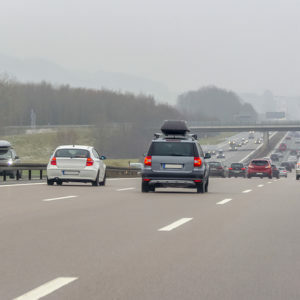Each year, the State Legislature is entrusted to spend billions of taxpayer dollars efficiently and prudently. Just as each of us does with our personal and household budgets, it is essential the legislature lives within the means of the available revenues–something that each and every one of us must take seriously.
A monumental task facing our Commonwealth right now is how to best reform and pay for Pennsylvania’s transportation system. The Senate Transportation Committee, under the guidance of Senator Wayne Langerholc, Jr. (R-35), has been having conversations with myself and our fellow Senators, stakeholders, and Commonwealth residents, as well as considering how other states have handled funding their transportation projects.
It is no surprise for any motorist in Pa. that our roads, bridges, and intersections are in need of much improvement and maintenance. Currently the discussion centers around a menu of funding options suggested by a transportation funding committee led by the Pennsylvania Department of Transportation (PennDOT), and other more innovative funding options such as a Grant Anticipation Revenue Vehicle (GARVEE) program, essentially a form of federal debt financing. Currently more than half of the states in our country have used, or are currently using, a GARVEE to fund their transportation needs.
Using GARVEEs enables states to generate upfront capital, and that in turn means transportation projects are addressed in a much timelier fashion. By funding the projects sooner, the state will improve their transportation services more quickly and we also mitigate the impact of inflation as contracts are active and costs are locked in faster than other funding options allow.
GARVEEs spread the cost of construction of roads, bridges, or any other transportation project over the period of the project’s useful life – rather than just over the construction period. This makes them useful for larger projects and can be likened to someone getting a mortgage to pay for a home. It is typically unrealistic to pay upfront for a costly, long-term item. When reserved for the big projects, using a GARVEE can be a smart decision that benefits everyone for years to come.
Using a GARVEE would be much more appropriate to secure funding for our transportation system rather than the Major Bridge P3 Initiative proposed by PennDOT. Their short-sighted initiative proposes to toll nine interstate bridges across the Commonwealth, imposing taxes, tolls, and user fees on hardworking Pennsylvanians as they recover from the pandemic.
Under PennDOT’s plan, motorists would have to pay for much more of the project much sooner. Most families are not in a position, post-pandemic, to dedicate significant additional sums of money to projects like this. It comes as no shock that a number of the bridges targeted are major routes which communing workers use each day to get to and from work.
Not to mention, while PennDOT claims the initiative could be “implemented quickly,” it later shared that implementation would take two to four years. But it’s doubtful the Pennsylvania motorists would agree that PennDOT potentially waiting another four years to address poor road conditions or persistent, heavy congestion is quick implementation. Rather, PennDOT proposes to continue to kick the can down the road for another 4 years, and what will the road conditions and the costs to repair be by then?
Pennsylvanians deserve a strong transportation infrastructure to drive the state’s economy to new places – not deteriorating roads and bridges that discourage employers from setting up shop in the Commonwealth and allows PennDOT to resort to scare tactics and economic terrorism in terms of holding the traveling public hostage for their gross mismanagement over the past few years.
GARVEEs can pave the way for a brighter future for all!

